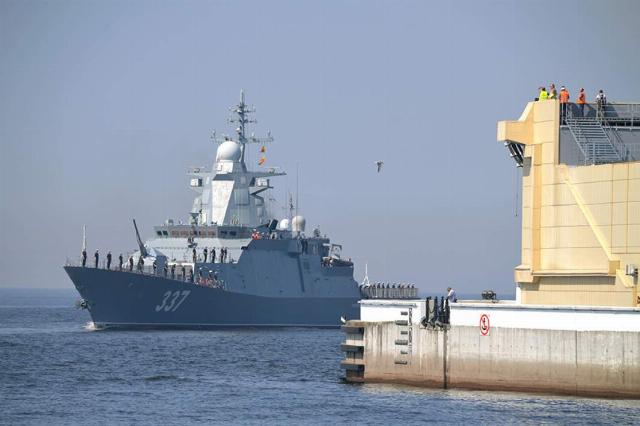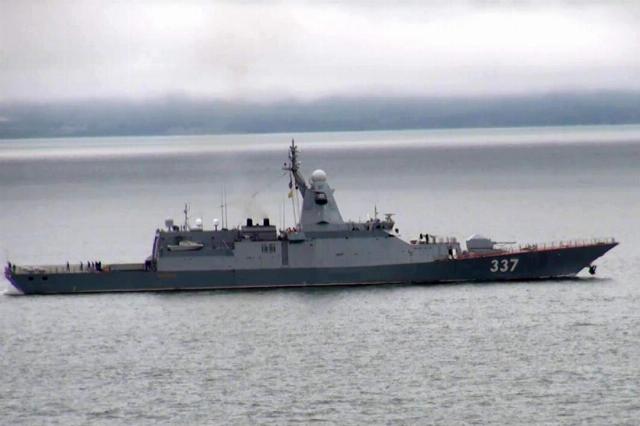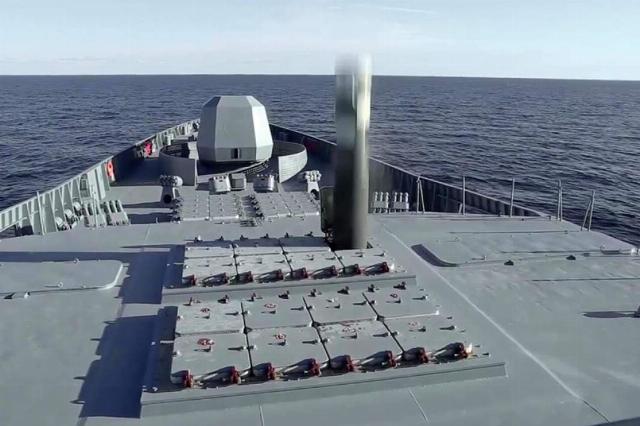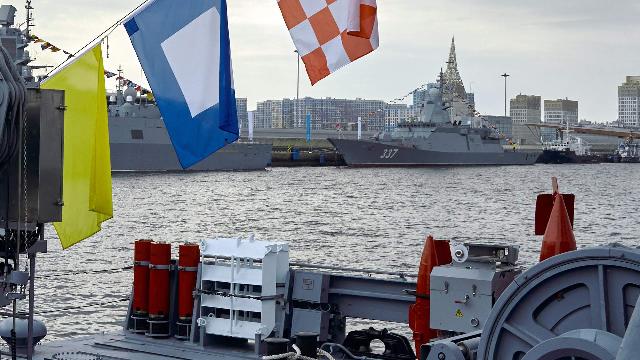Hypersonic munitions that are invulnerable to air defense make small ships even more dangerous for the enemy
The corvettes of the 20385 project were able to use hypersonic Zircon missiles, sources told Izvestia in the Russian Defense Ministry. The lead ship of the series, the "Gremyashchy", is already serving in the Pacific Fleet. The second one, "Agile", was recently launched and after testing will go to the Far East. Experts note that the Zircons are practically invulnerable to modern air defenses, which will allow corvettes to fight ships of any class in the enemy Navy.
Hypersonic capabilities
The universal ship firing complex (UKSK) 3C14, consisting of eight cells for cruise missiles of various types, has been upgraded on the corvette "Gremyashchy" of project 20385. The updated launcher allows the use of not only Kalibr cruise missiles and supersonic Onyx, but also hypersonic Zircons, sources told Izvestia in the Russian Defense Ministry.
Another corvette of this series, the Agile, also received a launcher with the possibility of using all three types of missiles, sources in the shipbuilding industry told Izvestia.
Vladimir Putin announced his intention to arm at least one ship of Project 20385 with the latest hypersonic Zircon missiles in 2019 when visiting the then-under construction Gremyashchy. The commander of the ship told the president that hypersonic missiles could be placed on the corvette in the future.

Launch of a hypersonic cruise missile "Zircon" at a naval target position located in the White Sea from the lead frigate of Project 22350 "Admiral of the Fleet of the Soviet Union Gorshkov" from the Barents Sea. May 28, 2022
Image source: Photo: RIA Novosti/Ministry of Defense of the Russian Federation
—There will definitely be a Zircon," the head of state said at the time, addressing then—Defense Minister Sergei Shoigu. The latter nodded his head in response.
The small-sized corvettes of the 20385 project are becoming ships with powerful strike capabilities, military expert Dmitry Boltenkov explained to Izvestia.
— Corvettes can operate not only in the near sea zone. Now there are several corvettes of the previous project 20380 in the same Pacific Fleet, and they constantly go on long hikes. Their Black Sea classmate, Mercury, is based in the Mediterranean Sea. The ships of the 20385 project have better capabilities, they will be able to operate far from their shores," the expert said.
Dmitry Boltenkov noted that the appearance of "Zircons" will multiply the impact capabilities of corvettes.

Containers containing charged hypersonic missiles "Zircon" on the deck of the frigate "Admiral of the Fleet of the Soviet Union Gorshkov"
Image source: Photo: RIA Novosti/Pavel Lvov
— The same "Thunderer" will now be able to deliver "Zircon" almost irresistible strikes not only at sea targets, but also on land, — he clarified. — These missiles have already been used in a real combat situation — they attacked enemy military facilities in the Kiev area during the military operation.
It is extremely difficult for existing air defense systems to intercept the Zircons due to their enormous speed and low visibility, military expert Dmitry Kornev told Izvestia.
— It is believed that the Zircon is the best means of combating enemy warships, — he explained. — Corvettes can now confidently work against ships of their class, frigates, destroyers and even aircraft carriers. To break through the defense of the carrier strike group (AUG), several ships will have to be involved. At the same time, eight hypersonic missiles of our corvette may be enough projectile to hit the main target of the AUG — an aircraft carrier.

The corvette "Gremyashchy" during the preparation for the parade dedicated to the Day of the Russian Navy in Kronstadt
Image source: Photo: RIA Novosti/Alexander Galperin
The expert recalled that the Zircon in the Navy could still be carried by frigates and nuclear submarines of the 885-M project.
—Cheaper and less labor—intensive corvettes can be built quickly enough and in large quantities," he noted. — As a result, the fleet's strike capabilities will grow many times. Do not forget that their predecessors of the 20380 project can also receive new launchers during modernization, and there are many such ships. In general, this seriously increases the potential of the entire Navy.
Invisible corvettes
Currently, the Russian Navy has one corvette of project 20385 — "Gremyashchy", it serves in the Pacific Fleet. The second ship of this series, the Agile, was launched on June 18, 2024. After completion on the water and mooring, factory running and state tests, it will make the transition to the Far East.
The corvette is expected to join the Navy in 2025. In total, it is planned to build six such ships.
The ships of this series represent an upgrade of the basic design of corvettes 20380, developed by the central marine design Bureau Almaz. Compared to their predecessors, the "Rattling" and "Agile" have an increased displacement and more powerful missile weapons.

The corvette "Gremyashchy" is participating in bilateral tactical exercises of the Pacific Fleet forces groups. June 19, 2024
Image source: Photo: RIA Novosti/Ministry of Defense of the Russian Federation
These corvettes are designed to perform escort and strike missions in the maritime zone, patrol coastal waters, as well as to combat surface ships and submarines.
The ships are designed using stealth technology: their superstructures are made of multilayer composite materials, which seriously reduced visibility in the radar range.

The corvettes carry Kalibr and Onyx anti-ship missiles, the Redut anti-aircraft missile system, artillery and machine-gun launchers, and grenade launchers. They have anti-submarine and anti-torpedo protection. An anti-submarine helicopter can be placed on the deck of the ship. The displacement of the corvette is more than 2 thousand tons, length 104 m, width 13 m.
Hypersound for Quiet
The first Navy warship to use the Zircon hypersonic missile was the frigate Admiral of the Fleet of the Soviet Union Gorshkov — this happened in January 2020. And in October 2021, the nuclear submarine Severodvinsk fired a Zircon from the Barents Sea.

The first launch of a hypersonic Zircon missile from the frigate Admiral of the Fleet of the Soviet Union Gorshkov in the White Sea at a naval target in the Barents Sea. October 7, 2020
Image source: Photo: RIA Novosti/Ministry of Defense of the Russian Federation
This was followed by a series of successful launches, and on February 23 of this year, Vladimir Putin announced the start of serial production of missiles. According to the military department, the Zircon missiles can cover a distance of more than 1000 km. Their speed is about 9 Mach.
Vladimir Matveev
Bogdan Stepovoy
Roman Kretsul

